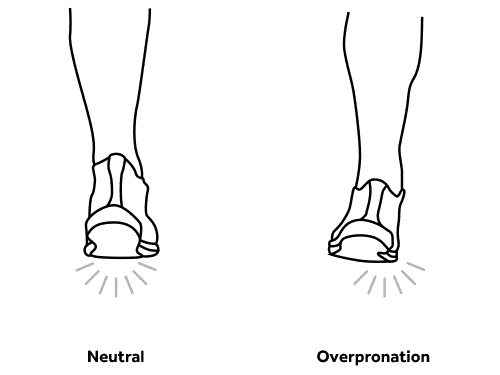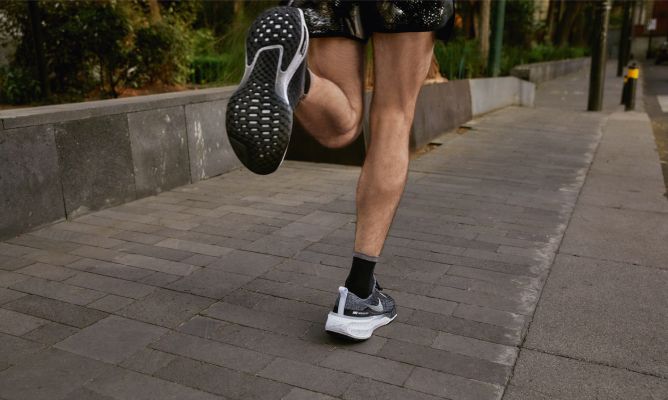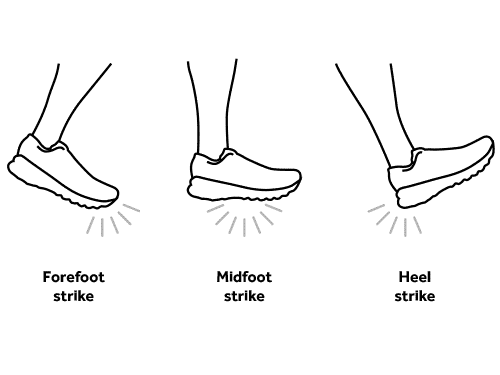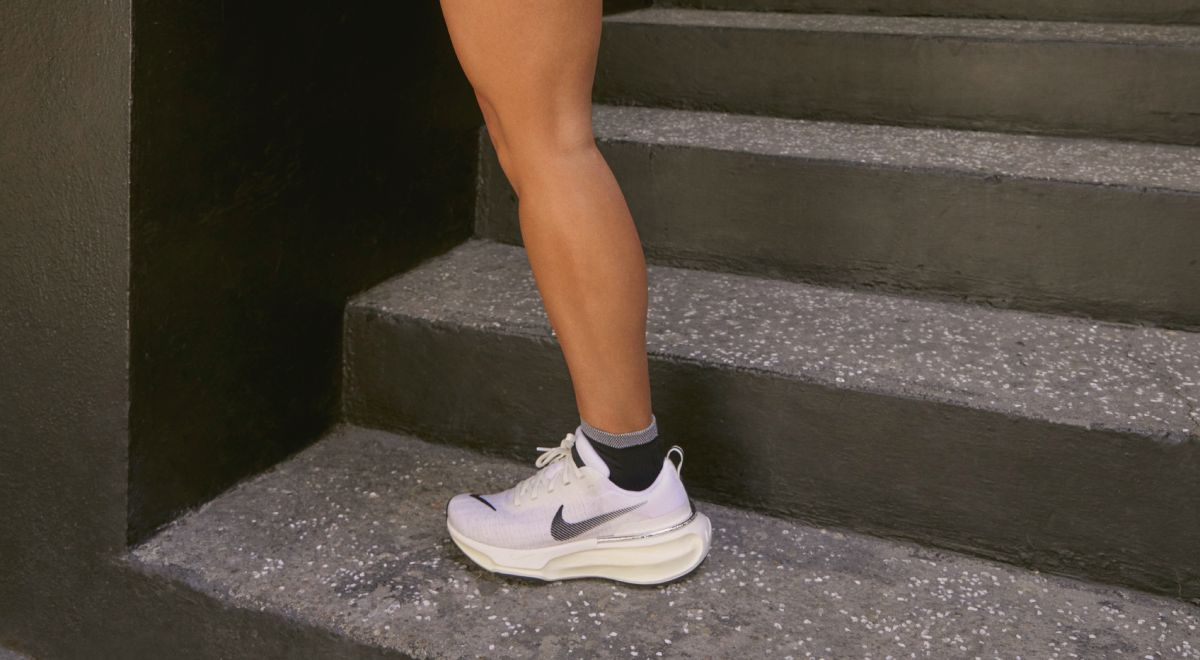You’ll be setting PB’s in no time
Finding the right pair of running shoes is no walk in the park, and more significant than shopping for your average casual sneaker. Whether you're a seasoned marathoner or lacing up for your first run, the best-fitting (and performing) shoes have a long list of criteria they need to meet to make the cut.
The perfect pair is supportive and comfortable in every way, will help protect you from injury, and will nudge you to pick up the pace when you need it the most.
Though in a world filled with endless options, colours, and innovative technologies the search may seem overwhelming. In this guide, we'll explore the strategies to finding your sole mate – the pair that propels you forward, cushions every stride, and feels like an extension of your very own feet. The perfect fit.
- How do I know my gait and foot type?
- What’s the difference between neutral, stability and motion-control shoes?
- Does the surface I run on matter?
- How much cushioning do I need?
- What is the heel-to-toe drop?
- How do I find the perfect fit?
How do I know my gait and foot type?
Everyone’s gait (AKA how your foot strikes the ground) is unique, so understanding your own is key when buying running shoes. It will guide you to purchase shoes with the appropriate level of support, cushioning, and stability tailored just for you.
Running gait is broken down into three types of pronation:
Balanced Pronators
Your foot remains true and doesn't roll inward or outward. This means you ideally want to consider shoes marked "neutral".
Over Pronators
Your foot tends to roll in as you run. This means you ideally want to consider shoes marked "stability" or "support".
Under Pronators
Your foot tends to roll out as you run, absorbing impact in your joints and knees. This means you should search for running shoes with extra cushioning and shock absorption.
Everyone naturally pronates to some degree (about 15 %). However excessive pronation can lead to common overuse injuries like shin splints, bunions, and knee issues.

So, what type of pronator are you?
To see if you're overpronating, grab an old pair of runners or flat shoes. Examine the wear and tear on the soles of the shoes. Do they appear to be wearing on the inside edge? If so, you’re likely overpronating. You can also try the wet test to analyse whether you have a normal, flat or high arch.
Expert Tip:
Neutral, stability, and motion control shoes – what’s the difference?
Once you've established what kind of feet you have, it's time to match it up with the perfect pair of running shoes: the neutral shoe, stability shoe, or motion control shoe.
Neutral shoes
If you’re a balanced pronator with a normal arch a neutral shoe is the shoe for you. These won’t affect your gait or correct overpronation but will still provide support.
Stability shoes
If you’re an overpronator with high arches then stability shoes will make the world of difference. They’re made with stabilising features such as ‘medial posts’, ‘bars”, and ‘guide rails’ which are built into midsoles to help steer your feet to promote a more natural gait and prevent excessive inward foot rolling (overpronation).
Motion control shoes
These are designed with flat-footed runners in mind. They’re more rigid and heavier than their counterparts, including arch support in the midsole, as well as heel cup support and stabilising features to prevent foot rolling.
Does the surface I run on matter?
Yes, whether you’re planning to run on the road, trail, or treadmill, the type of surface you run on makes a big difference to the type of shoe you may need.
Road Running
Where a consistent and often hard surface is prevalent (such as sidewalks, treadmills, or track), road running shoes that are light and flexible with ample cushioning and a moderate heel-to-toe drop are recommended. These features help absorb impact forces and provide a smooth ride on the pavement.
Trail Running
Trail running, on the other hand, demands shoes with robust outsoles (often with cleats), aggressive treads, and sturdy construction to navigate uneven terrain, rocks, and roots effectively. Trail running shoes are usually stiffer through the midsoles for more support and often have additional features like toe caps and rock plates for extra protection against sharp objects.

Expert Tip:
How much cushioning do I need?
Cushioning also plays a pivotal role in providing comfort and support, absorbing impact forces, and preventing fatigue during your runs.
Ultimately, there is no one-size-fits-all answer to how much cushioning you should have in your running shoes. It's a matter of personal preference and finding the right balance that allows you to run comfortably and perform at your best.
Trying on different shoes, considering your unique needs (like recovering from an old injury or preferred terrain), and running style (heel-striker, midfoot striker, or forefoot striker) will guide you in determining the optimal level of cushioning you might want in a shoe.
For example, if you primarily run on hard surfaces like concrete or asphalt or run longer distances, you might prefer more cushioning to absorb the impact and reduce the strain on your joints and muscles. On the other hand, if you frequently run on softer surfaces like trails, you may not need as much cushioning.
Some also may prefer a plush and soft feel underfoot, while others opt for a firmer and more responsive ride – it really is up to you.

Expert Tip:
What is the heel-to-toe drop?
The heel-to-toe drop in a running shoe, often referred to as the "drop," is the height difference between the heel and the forefoot of the shoe, which is measured in millimetres.
This metric significantly affects how your foot strikes the ground and can impact your biomechanics during a run. Runners often select the heel-to-toe drop based on their running style, preference, and the type of training they do.
A higher heel-to-toe drop of 10mm and up (often seen in many traditional running shoes) means the heel is elevated relative to the forefoot, promoting a more heel-striking gait and offers additional cushioning and support.
On the other hand, a lower drop or zero drop shoe (such as barefoot running shoes) encourages a more natural, midfoot, or forefoot strike and can provide a more minimalist feel, promoting a connection with the ground.

How do I find the perfect fit?
Finding a shoe that fits like a glove is just as important as finding a shoe that suits your style of running and your foot type. Here’s our tips to help you find the perfect fit:
- Measure both feet. People often have one larger foot, so you will need to size up according to your larger foot.
- Ensure they’re comfortable from the get-go. You shouldn’t have to break them in.
- Make sure you have a half to a full thumb's nail length (1-1.5cm) from your big toe to the end of the shoe. This may require going up in size from your street shoe. Running causes feet to swell, so you'll want to have plenty of room in the toe box. Crammed toes put you at risk of developing blisters or black toenails (ouch!).
- Consider the width of your feet, as different shoes come in various width options. They should feel snug but not too tight.
- Try shoes on with socks, insoles, or orthotics (if you have them) as they can make a considerable difference to how your shoes feel and fit.
- Ensure you find the right lacing technique suited to your foot type to help prevent heel slippage.
- Give your shoes a test-run in a rebel store before purchasing to assess comfort and fit.
- To avoid buying shoes that are too small, we recommend trying on shoes at the end of the day when your feet are likely to be at their largest due to everyday swelling.
If you’re still not sure what shoes are right for you, head in-store to rebel, and our footwear specialists can analyse your foot type and help you choose your new running shoes.